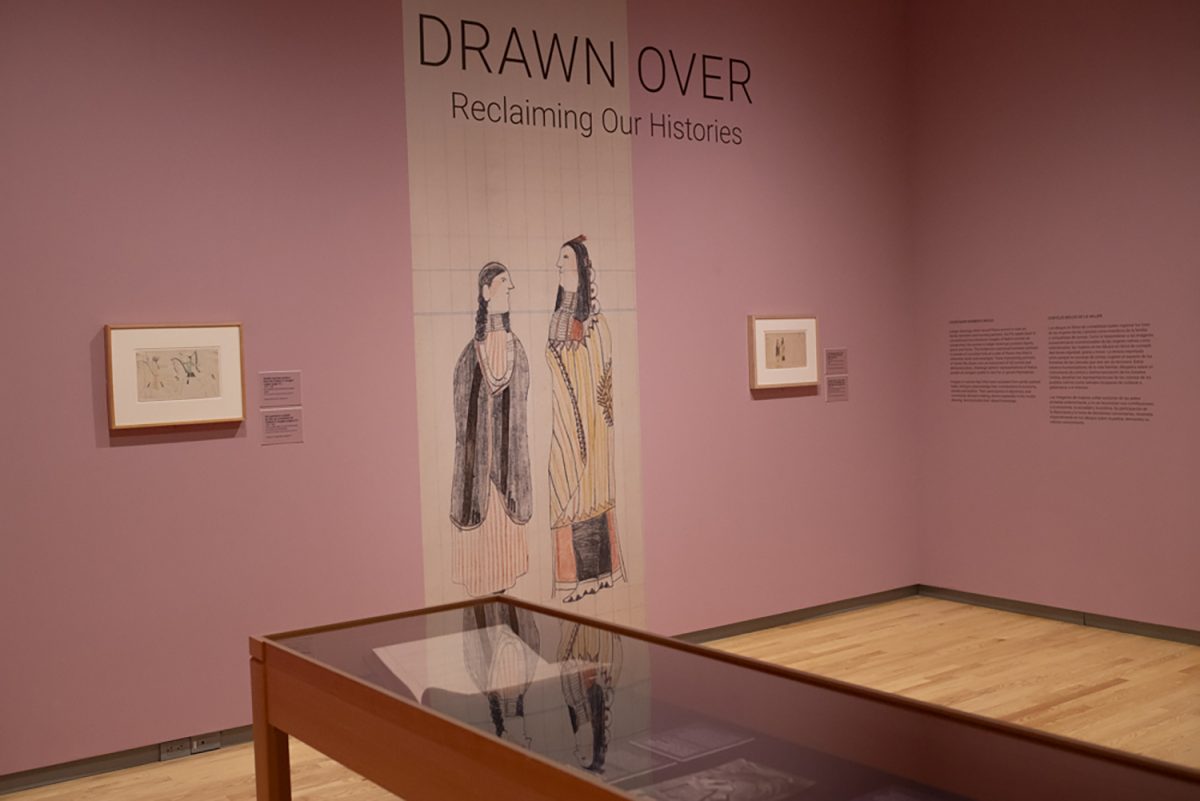The University of Iowa’s Stanley Museum of Art is proven to be dedicated to showcasing underrepresented or historically diminished voices within its curated exhibits.
The “Drawn Over: Reclaiming Our Histories” exhibit, featuring an array of drawings from different Indigenous nations across Iowa, is its latest collection dedicated to educating through art.
The exhibit holds a large collection of ledger drawings — Native American pictographs — that emerged during the Plains Wars of the late 19th century when U.S. forces invaded Indigenous land between the Mississippi River and the Rocky Mountains.
After Indigenous people were brutally massacred, centuries of villainization and misrepresentation followed.
Jacki Rand, a citizen of the Choctaw Nation of Oklahoma, is an associate professor of Native American studies at the University of Illinois Urbana-Champaign and the guest curator of the exhibit. She spoke on the importance of educating the community on the often wrongfully portrayed depiction of Indigenous people.
“We wanted to focus less heavily on warrior culture since it’s something Americans don’t usually understand the full picture of,” Rand said.
Instead, Rand, among the other curators, sought to display art that showcased Indigenous family life and an accurate representation of the historical dynamics between Indigenous men and women.
One ledger, in which a woman is depicted riding a horse while holding an umbrella over her head as a man leads on foot, is an example of this.
Rand’s goal is that viewers will perceive Indigenous people as they perceive themselves, rather than the defamatory depictions that are often at the forefront of U.S. history books.
The 11-piece collection can be attributed to the collaboration between Rand and the team she gathered for the occasion.
The team consists of Erica Prussing, an associate professor in the UI’s anthropology department; Jennifer New, the community engagement specialist at the Stanley; Mary Young Bear, a Meskwaki traditional artist; Patricia Trujillo, a retired museum professional and citizen of Ojibwe/Meskwaki nations; and Phillip Round, an emeritus professor of English, Native American and Indigenous studies at the UI.
“If I give myself credit for anything, it’s that I put together a brilliant team,” Rand said. “The team consisted of people I knew, trusted, and [whose knowledge I valued] about Native history and culture.”
Rand noted that New, who specializes in community engagement, came up with the title of this exhibit. Likewise, Trujillo, a museum academic and Native woman herself, was a big asset in this collaboration, according to Rand.
“This ledger paper was used to keep track of us [Native Americans] like cattle,” Trujillo stated, underscoring that the artwork in the exhibit serves as a literal drawing-over of Native mistreatment and a visual reclamation of their history.
Trujillo shared she aimed to create a “sense of sameness” between non-Native people and Native people with the creation of the exhibit.
“Everybody has to take care of their family, take care of their home, get food, work … those are all the same no matter what culture you’re in,” Trujillo said.
The inclusion of Native voices on a project dedicated to curating a platform for uplifting those same voices was paramount for its success, according to Rand.
“It’s important to highlight that methodology,” she said. “We tried to shy away from that one expert curatorial direction and used collaboration to achieve this goal of bringing out unheard voices.”
Derek Nnuro, the project manager of the “Drawn Over” exhibition and the Stanley’s curator of special projects, emphasized the exhibit’s message.
“The show takes an innovative approach to exhibition design,” Nnuro said. “It is a celebration of Indigenous identity and survival.”
Open until Jan. 2, 2024, Nnuro urges Iowa City community members to see “Drawn Over” for a “first, second, or even third time.”
“I hope visitors leave feeling empowered to work toward a better future,” Nnuro said.



